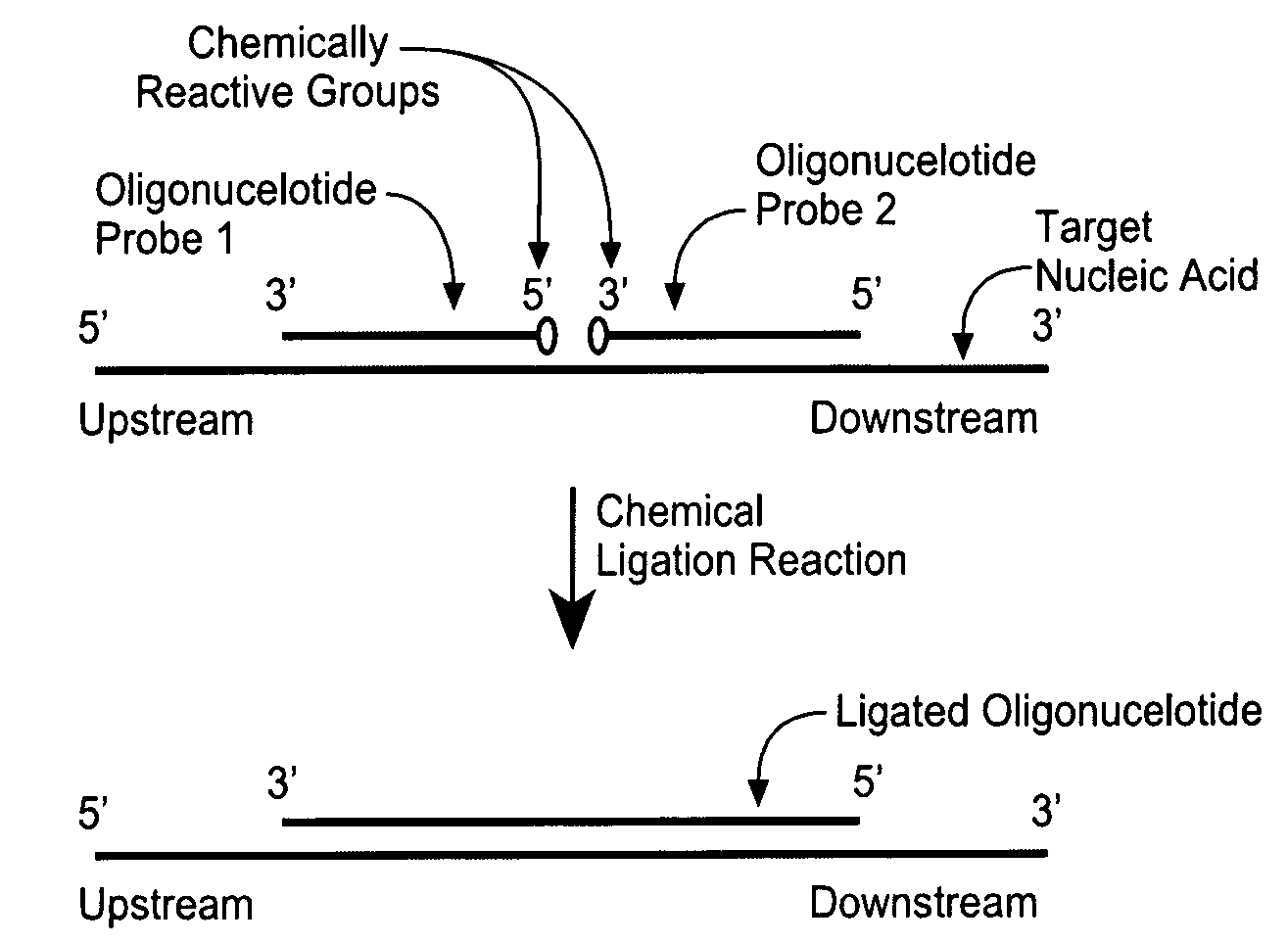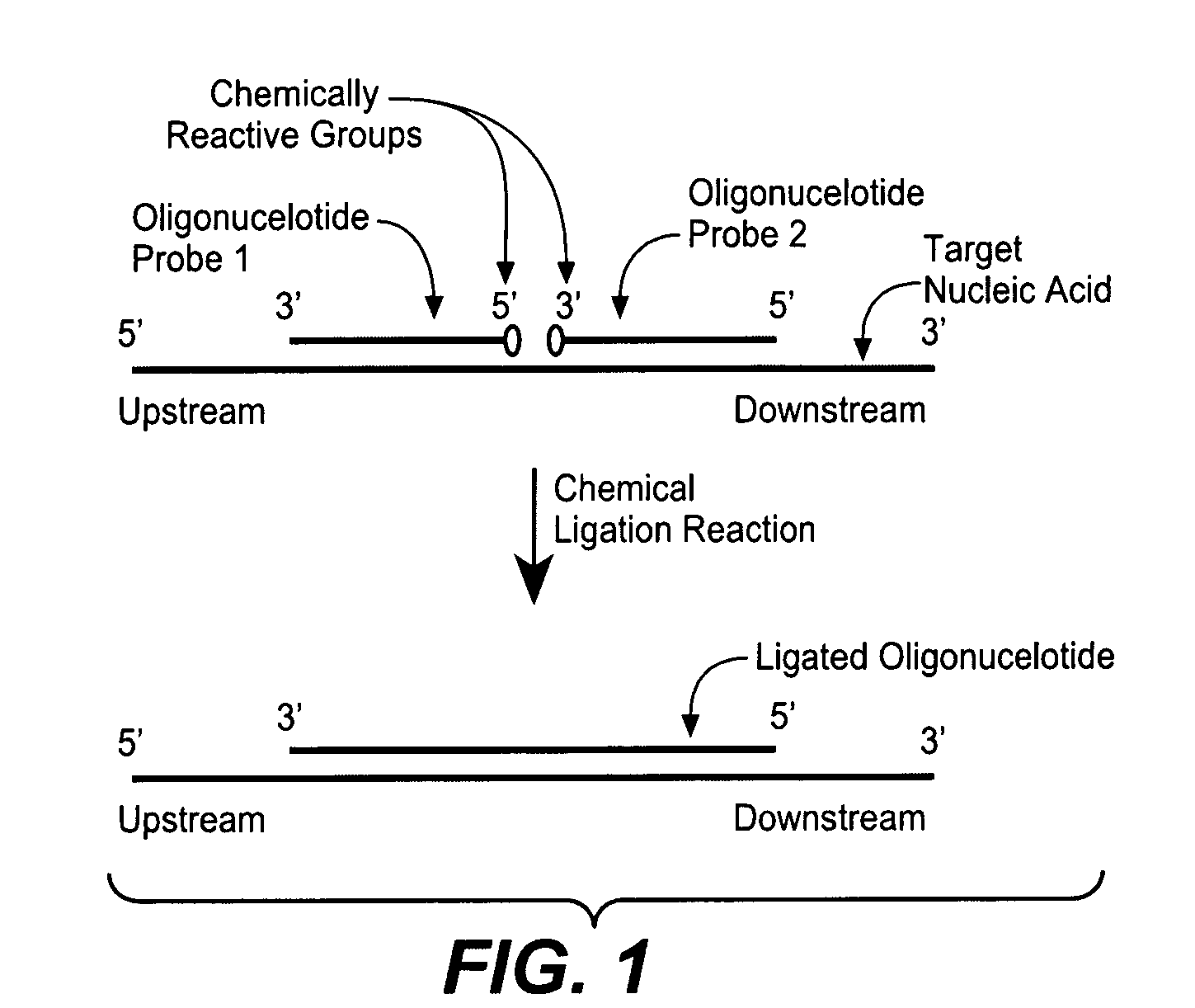Detection of nucleic acid targets using chemically reactive oligonucleotide probes
a technology of oligonucleotide probes and nucleic acids, applied in the field of detection of nucleic acids, can solve the problems of need for subsequent purification procedures, difficulty in general use, and difficulty in specificity
- Summary
- Abstract
- Description
- Claims
- Application Information
AI Technical Summary
Problems solved by technology
Method used
Image
Examples
examples
[0180]T*=Fluorescein dT (Glen Research)
[0181]D1=5′-L-ACT*CCGACCTTCACCA-3′ (SEQ ID NO: 3)
[0182]D2=5′-L-ACT*GTGGTCATGAG-3′ (SEQ ID NO: 4)
[0183]Thio 1=5-ACCAAATCCGTT-S-3′ (SEQ ID NO: 5)
[0184]Thio 2=5′-AGTGATGGCATG-S-3′ (SEQ ID NO: 6)
[0185]Target 1=5′-TGAAGGTCGGAGTAACGGATTTGGTCGTA-3′ (SEQ ID NO: 7)
[0186]Target 2=5′-CATGACCACAGTCATGCCATCACTGCCA-3′ (SEQ ID NO:8)
[0187]In a 200 ul PCR tube suitable for real time fluorescence monitoring was added 100 nM target (Target 1 or Target 2), 500 nM 3′ phosphothioate labeled probe (Thio 1 or Thio 2) and 500 nM Dabsyl and Fluorescein labeled probe (D1 or D2) in 50 ul of buffer solution (60 mM Pipes Buffer, pH 7.0, 10 mM MgCl2, 50 uM DTT, and 1 ug / ml Salmon Sperm DNA). The solutions were mixed and loaded into a Stratagene Mx3000P real-time PCR instrument. The samples were incubated at 30° C. and the fluorescence was measured in the FAM channel of the instrument every 5 minutes over a 1 hour period. Reactions were performed in duplicate and the data was...
PUM
| Property | Measurement | Unit |
|---|---|---|
| melting temperature | aaaaa | aaaaa |
| melting temperature | aaaaa | aaaaa |
| melting temperature | aaaaa | aaaaa |
Abstract
Description
Claims
Application Information
 Login to View More
Login to View More - R&D
- Intellectual Property
- Life Sciences
- Materials
- Tech Scout
- Unparalleled Data Quality
- Higher Quality Content
- 60% Fewer Hallucinations
Browse by: Latest US Patents, China's latest patents, Technical Efficacy Thesaurus, Application Domain, Technology Topic, Popular Technical Reports.
© 2025 PatSnap. All rights reserved.Legal|Privacy policy|Modern Slavery Act Transparency Statement|Sitemap|About US| Contact US: help@patsnap.com



